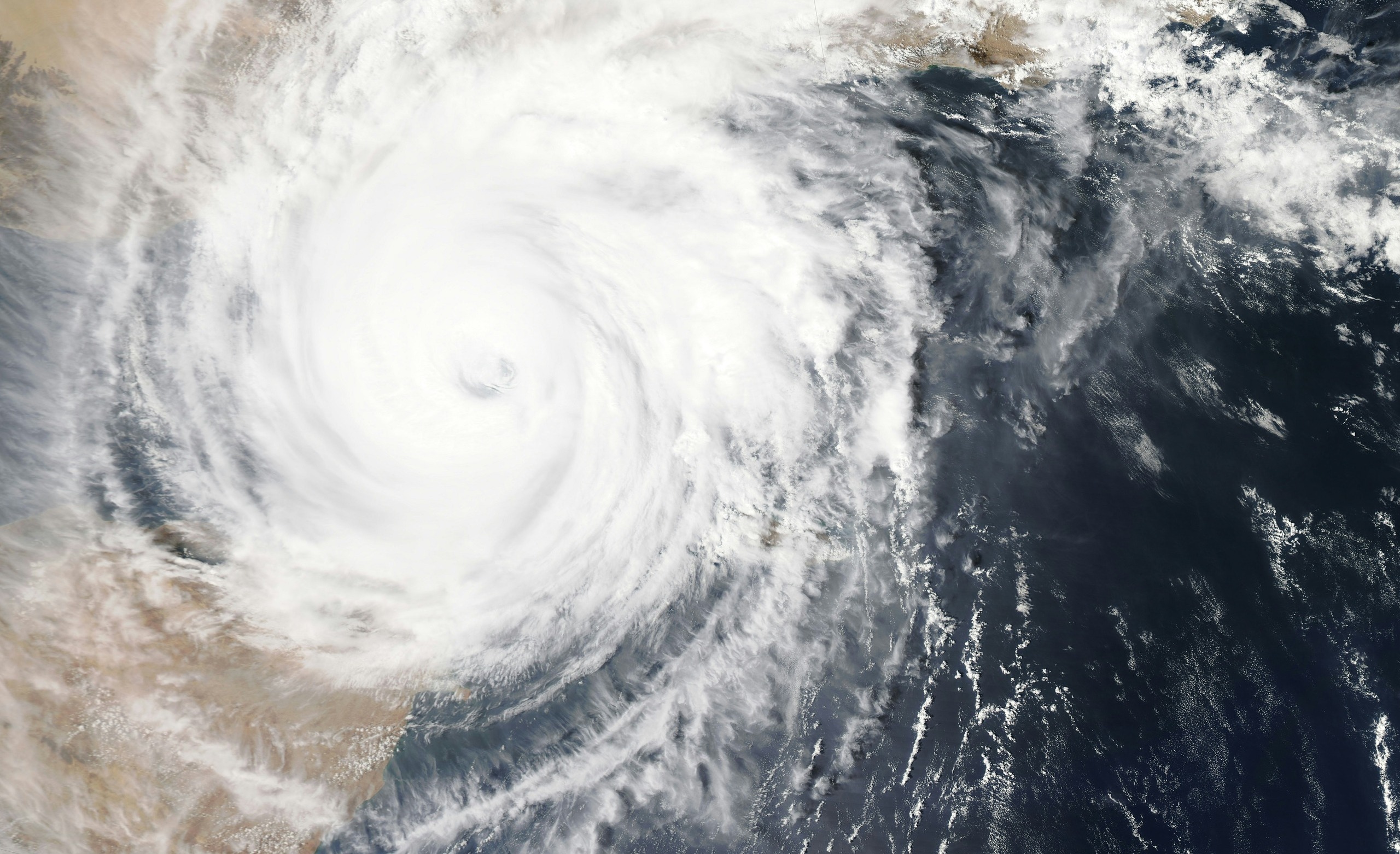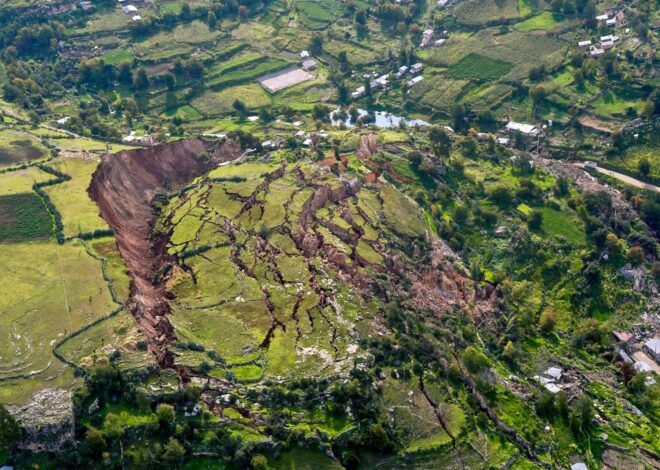
How To Survive In A Hurricane
Batten down the hatches and hold onto your hats, because we’re going to learn how to survive in a hurricane! Hurricanes are nature’s fierce display of power, leaving nothing but chaos in their wake.
But fear not, because with some knowledge and preparation, you can learn how to survive an Atlantic hurricane like a pro. From understanding the categories of hurricanes to stocking up on essential supplies and staying safe during and after the storm, this blog post will guide you through every step of weathering the tempest.
So grab a cup of coffee (or maybe something stronger) and let’s embark on this whirlwind journey together!
Understanding the Categories of Hurricanes
Hurricanes are categorized based on their wind speeds and potential to cause damage. The Saffir-Simpson Hurricane Wind Scale classifies hurricanes into five categories, with Category 1 being the least severe and Category 5 being the most intense.
Category 1 hurricanes have winds ranging from 74-95 mph and can result in minimal damage, while Category 5 hurricanes have winds exceeding 157 mph and can cause catastrophic destruction. Understanding these categories is crucial for preparing for a hurricane’s impact.
Knowing the category of a hurricane approaching your area allows you to gauge the level of preparation needed. It helps in determining whether evacuation is necessary or if staying put with proper precautions is sufficient. Being aware of the potential dangers posed by each category empowers individuals to make informed decisions when facing an impending storm.
Preparing for a Hurricane
Hurricanes can be unpredictable and dangerous, so it’s crucial to have a plan in place before one strikes. Start by creating an emergency plan with your family. Make sure everyone knows what to do and where to go if evacuation is necessary.
Stock up on essential supplies like water, non-perishable food, medications, and batteries. Don’t forget about your furry friends – make sure you have pet food and supplies ready too. It’s better to be over-prepared than caught off guard.
Protecting your home is also important. Trim trees and secure outdoor furniture that could become projectiles in strong winds. Consider investing in storm shutters or plywood to cover windows.
Remember, preparation is key when it comes to surviving a hurricane. Stay safe and stay informed by keeping track of weather updates from reliable sources.
#1- Creating an Emergency Plan
When it comes to surviving a hurricane, one of the most crucial steps is creating an emergency plan. Start by discussing with your family or household members where you will go if you need to evacuate and how you will communicate during the storm. Assign specific tasks to each person so everyone knows their role in preparing for the hurricane.
Make sure to have a list of important contacts handy, including emergency services, neighbors, and relatives outside the affected area. Plan escape routes from your home and designate meeting points in case you get separated. Additionally, create a grab-and-go bag with essential items like water, non-perishable food, medications, important documents, flashlights, and blankets.
Practice your emergency plan with drills so that everyone knows what to do when a hurricane approaches. Stay informed about evacuation orders and shelters in your area so that you can act quickly when necessary. Remember that being prepared is key to staying safe during a hurricane.
#2- Stocking Up on Supplies
When a hurricane is on the horizon, being prepared means having essential supplies in place. Stocking up on non-perishable food items like canned goods, granola bars, and dried fruits can sustain you during power outages or when access to fresh groceries is limited. Don’t forget about water – aim for at least one gallon per person per day for drinking and sanitation purposes.
In addition to food and water, make sure to have a supply of batteries, flashlights, a first aid kit, medications, hygiene products, and important documents stored securely in waterproof containers. Consider stocking up on extra pet food if you have furry friends at home too.
It’s also wise to have cash on hand as ATMs may not be operational during or after the storm. Remember that preparation is key when it comes to weathering the impact of a hurricane safely.
#3- Protecting Your Home
Protecting your home during a hurricane is crucial to minimize damage and keep you safe. Start by securing windows and doors with storm shutters or plywood. Trim trees and bushes around your property to prevent branches from causing damage in high winds.
Clear out gutters and drains to avoid water buildup that could lead to flooding. Bring outdoor furniture, decorations, and any other loose items indoors or secure them tightly. Consider reinforcing your garage door if it’s not wind-resistant.
Check your roof for loose shingles or tiles that could be ripped off in strong winds. Inspect the foundation of your home for any cracks or vulnerabilities that may worsen during a storm.
Invest in a generator to ensure you have power during potential outages, and consider installing impact-resistant windows for added protection. Being proactive in safeguarding your home can make a significant difference in how well it weathers the storm.
During the Hurricane
During a hurricane, staying informed is crucial. Make sure to have a battery-powered radio or access to emergency alerts on your phone. Stay updated on weather conditions and evacuation orders.
Safety precautions are essential during the storm. Secure windows and doors with plywood or storm shutters. If instructed to evacuate, do so promptly and follow designated routes.
Prepare an emergency kit with essentials like water, non-perishable food, flashlights, batteries, first aid supplies, and important documents. Have enough supplies for each family member for several days.
Stay indoors during the hurricane unless advised otherwise by local authorities. Avoid using candles as they pose fire hazards; opt for flashlights instead. Keep your cell phone charged in case of emergencies.
Remember that safety comes first—follow evacuation orders without delay if directed to do so by officials in your area.
#1- Staying Informed
When facing a hurricane, staying informed is key to your safety. Keep a battery-powered radio or charged devices handy to receive updates from local authorities and weather experts. Tune in to official channels for the latest information on the storm’s path, intensity, and any evacuation orders.
Check social media platforms cautiously for news but be wary of misinformation that can spread rapidly during emergencies. Reliable sources such as the National Hurricane Center or FEMA should be your primary go-to for accurate details. Additionally, signing up for emergency alerts via text or email can provide crucial notifications directly to your device.
Stay vigilant and heed warnings promptly. Be prepared to act swiftly if conditions worsen unexpectedly. Monitor changing weather patterns closely until you are given the all-clear signal from authorities indicating that it is safe to venture outside again. Your safety relies on being proactive and staying well-informed throughout the duration of the hurricane impact.
#2- Safety Precautions and Evacuation
When a hurricane approaches, safety precautions and evacuation planning are crucial steps to protect yourself and your loved ones. Stay tuned to local authorities for updates on evacuation orders. Follow their instructions promptly.
Secure loose outdoor items that could become dangerous projectiles in high winds. Trim trees and shrubs around your home to reduce potential flying debris. Board up windows with plywood or install storm shutters for added protection.
If advised to evacuate, leave early to avoid traffic congestion and potentially dangerous conditions. Pack essential items like important documents, medications, clothing, food, and water. Consider the needs of pets if you have them; they are part of the family too!
Follow designated evacuation routes and do not attempt to drive through flooded roads. Seek shelter in a safe location away from coastal areas or flood-prone zones as directed by emergency services. Remember: your safety comes first during a hurricane event!
After the Hurricane
After the hurricane passes, it’s crucial to assess the damage and ensure your safety. Be cautious of downed power lines, damaged buildings, and flooded areas. Stay away from standing water as it may be contaminated or electrified.
Check your home for any structural damage before entering. Look out for gas leaks, broken windows, or weakened foundations. If you suspect any danger, evacuate immediately and contact local authorities.
Dealing with power outages and water shortages can be challenging but staying patient is key. Use flashlights instead of candles to prevent fire hazards during blackouts. Boil water if unsure of its cleanliness or rely on bottled water for drinking and cooking.
Remember that recovery takes time so prioritize safety first. Reach out to emergency services if needed while assisting neighbors in distress whenever possible. Take care of yourself mentally and physically during this trying time post-hurricane impact.
#1- Assessing Damage and Staying Safe
After the hurricane passes, it’s important to assess the damage to your property carefully. Check for any structural damages, such as roof leaks or foundation cracks. Inspect your surroundings for fallen trees, debris, and potential hazards.
Ensure that your home is safe before re-entering. Look out for gas leaks, electrical issues, and unstable structures. If you suspect any danger, contact local authorities immediately.
Document the damage by taking photos or videos of affected areas. This will be crucial when filing insurance claims later on. Keep a record of all expenses related to repairs and replacements.
Stay cautious during clean-up efforts to avoid injuries from sharp objects or contaminated water. Wear protective gear like gloves and masks when handling debris.
Prioritize safety at all times while dealing with post-hurricane tasks. Remember that recovery takes time; be patient with yourself and those around you as you navigate through this challenging period.
#2- Dealing with Power Outages and Water Shortages
When a hurricane strikes, power outages and water shortages are common challenges that many people face in the aftermath. Dealing with these disruptions requires resourcefulness and preparation.
Power outages can leave you without essential utilities for an extended period. Make sure to have flashlights, batteries, and portable chargers readily available. Consider investing in a generator for backup power if feasible.
Water shortages can quickly become a critical issue during a hurricane. Stock up on bottled water before the storm hits. If tap water becomes unsafe to drink, use purification tablets or boil water before consumption.
Stay updated on local news and alerts regarding restoration efforts for power and water services. Be patient as utility companies work tirelessly to restore infrastructure in affected areas.
By staying proactive and adaptable, you can navigate through power outages and water shortages more effectively after a hurricane passes through your area.
Coping with Emotional Impact
Coping with the emotional impact of a hurricane can be overwhelming. The stress, fear, and uncertainty that come with such a natural disaster can take a toll on your mental well-being. It’s important to acknowledge these emotions and give yourself permission to feel them.
Reach out to friends, family, or a mental health professional for support during this challenging time. Talking about your feelings can help you process them and find some relief. Remember, it’s okay not to be okay.
Engage in self-care activities that bring you comfort and relaxation. Whether it’s practicing mindfulness, taking a warm bath, or going for a walk in nature, prioritize activities that nourish your soul. Taking care of yourself is crucial in coping with the emotional aftermath of a hurricane.
Stay connected with your community and participate in group activities or support groups if available. Sharing experiences with others who have gone through similar situations can provide solidarity and understanding. Together, you can navigate the healing process one step at a time.
Conclusion:
Surviving a hurricane requires careful planning, readiness, and quick thinking. By understanding the different categories of hurricanes, creating an emergency plan, stocking up on supplies, and protecting your home, you can increase your chances of staying safe during the storm. During the hurricane, staying informed and following safety precautions are vital for your well-being.
After the hurricane passes, assessing damages carefully while ensuring safety is crucial. Dealing with power outages and water shortages may be challenging but being prepared can help alleviate some stress. Remember to take care of yourself emotionally as well; coping with the aftermath of a natural disaster can be overwhelming.
By following these tips and being proactive in preparing for a hurricane, you can better protect yourself and your loved ones when faced with such a powerful force of nature. Stay safe and stay informed – survival in a hurricane is possible with proper planning and actions taken before, during, and after the storm hits.




Hi Jack,
First off, let me say a hearty thank you for your comprehensive guide on surviving a hurricane. Here in Canada, while we may not face the brunt of hurricanes as frequently as those in the Atlantic hurricane belt, the tail ends of such storms and the accompanying weather systems can still pack a punch in certain areas. So, your detailed advice is not just appreciated, but also quite essential for preparedness.
Your breakdown of the Saffir-Simpson Hurricane Wind Scale was particularly enlightening. It’s fascinating how the scale provides a clear framework for understanding the potential severity of these storms. Given the unpredictability of weather patterns these days, having a solid grasp of these categories helps in personal and community preparedness, something we value greatly here.
I was also impressed by your thorough list of preparations, from securing the home with storm shutters or plywood to ensuring adequate stock of emergency supplies like water, non-perishable food, and medications. These are practical tips that can sometimes slip one’s mind in the rush to prepare for an impending storm.
Your emphasis on the importance of creating and practicing an emergency plan resonates deeply. It’s something that many overlook, but as you pointed out, knowing what to do and where to go beforehand can indeed make a significant difference in safety. This proactive approach is something we encourage in all aspects of emergency preparedness here in Canada, be it for storms, wildfires, or even snowstorms.
Moreover, your advice on staying informed through reliable sources and ensuring communication devices are charged and functional is a reminder of how crucial information is during emergencies. In today’s digital age, staying updated is easier, yet it’s vital to verify the sources and avoid misinformation, a practice that’s universally important.
Lastly, the post-hurricane tips you provided are invaluable. The aftermath of a hurricane can be just as dangerous as the storm itself. Assessing damages safely, avoiding downed power lines, and checking for structural damages are all critical steps that many might not consider amidst the relief that the storm has passed.
Jack, your guide is a treasure trove of information that I’ll certainly be sharing with friends and family. It’s a reminder of how being well-prepared can significantly mitigate the risks posed by such natural disasters. Keep up the fantastic work, and I look forward to reading more insightful posts from you.
Stay safe and best regards,
Eric
From Montreal, Canada
Hey Eric,
Thank you for stopping by and leaving such a comprehensive response to my article on Surviving in a Hurricane. I grew up in South Florida and have first hand experience dealing with the mother of all storms, the hurricane. It’s an experience I wouldn’t wish on anyone but if you live in hurricane country, it’s just a matter of time until one hits you.
Surviving during a hurricane is a harrowing experience that one will never forget. Should you be in the direct path of a hurricane. You can expect catastrophic damage to structures and infrastructure. The best thing to do if you live in an evacuation area is get out of harms way.
Experiencing a direct hit from a hurricane is not for the faint of heart. If you live along the coastline, you can expect a storm surge which is the deadliest part of the storm in my opinion. Another deadly part of the hurricane are the winds and tornadoes that spin off the outer bands of the storm.
Should you decide to stay, this is what you should expect during a hurricane. The winds howling outside sound just like a freight train and can last for several hours. And if you are fortunate enough to survive all of that. You have to deal with the aftermath of the storm as well.
From my experience, the aftermath was even worse than surviving the hurricane. You have to deal with clean-up and damage assessment after the storm. Downed power lines are dangerous and always claim victims well after the storm has passed. They look harmless even though they may be live.
Here comes the worst part, the loss of electricity. After hurricane Wilma in 2005, we went without electricity for almost a month. It was by far the worst part of the storm we experienced and I was not prepared for it. Preparation is the best insurance policy one can have.
Thanks again for stopping by Eric. Best wishes and always be prepared. It’s The Survival Way!